Why Is Pop Art So Influenced by Graphic Design?
Pop Art and pattern have emerged in the fifties but remained relevant upwardly to the present solar day. Product design influenced pop fine art, and pop art influenced product design. In the time of the post-state of war smash, mass production was everywhere, brightly colored commercials were staring at people from every corner, the fashion manufacture was picking up, pop music every bit nosotros know information technology was on the ascension and glory gossip was a matter. The dominant force in the art world was abstract expressionism which, although praised by serious art lovers, had sure problems to connect with the general audience. Information technology was loftier time for popular culture and consumerism to make their way into art.
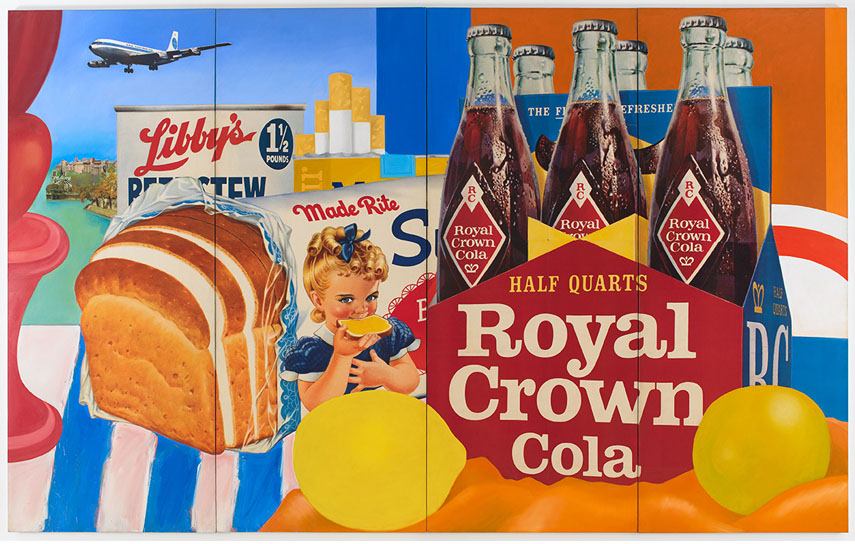
Commercial Graphic Design and Its Influence on Pop Fine art Aesthetics
The predecessor of pop art was neo-dadaism, that earlier in the fifties started re-appropriating plant objects and mass media. And while neo-dada was (much similar original dadaism) focused on deconstruction (leaving us, for example, with unique junk sculptures and assemblages, abstruse dance and immersive installations), pop artists embraced the mass production, making it both an inspiration and a crucial way of achieving the finished works of art. Many of the leading pop artists started as designers in advertizing , so they were able to utilise modern screen press techniques to create their work and reproduce it a number of times. Thick outlines and strong color palettes frequently limited to red, blue and yellow, the characteristics of the commercial printing at the time, became the trademark of the genre. In club to go the audience to answer on an experiential level, the artists re-appropriated the visual language of their daily lives – the comic book aesthetics of Roy Lichtenstein, with the Ben-Twenty-four hour period dots heavily utilized in pulp comic books to create shades and secondary colors, is a good example: the look makes information technology instantly relatable to a common man. The industrial production procedure, stylization, quotation, borrowing, and re-appropriation are the main techniques of pop art. Together, they created a distinctive visual language and an ideology followed by a large number of popular artists.
Exist sure to check out works by Roy Lichtenstein on our marketplace!
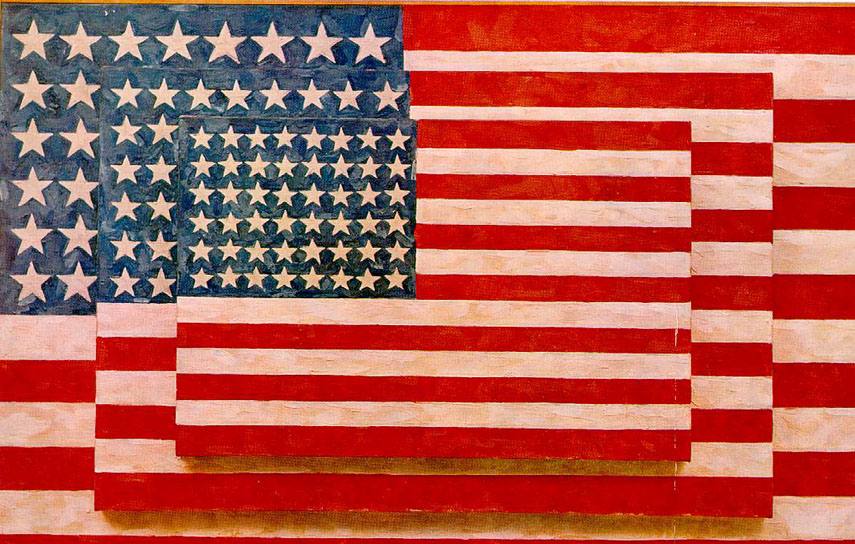
British Term for American Art
The term Pop Fine art first appeared in the Britain in the mid-l's. But, although the British popular art is older, it was actually inspired by the American popular civilisation viewed from a distance! In the United States, popular art appeared in the late fifties and it was more ambitious since it was created on the very source of the American popular culture. The pop artists in the States wanted their art to be more inclusive, reflecting the life in contemporary America. Some of them were chosen the new realists in the showtime couple of years – because, why else would you paint or sculpt mutual objects? The pop art movement quickly conquered America and the earth. In France, though, it did exist under the umbrella term of "new realism", alongside several other disciplines. The French frowned upon American popular culture and couldn't forgive America for becoming more important than France in the world of contemporary art.
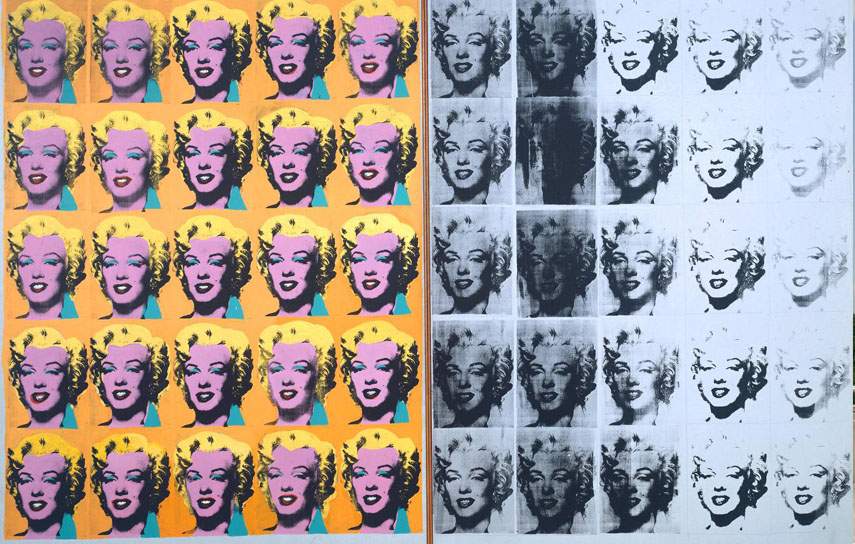
Pop Art: the Art for the Masses
Pop art was criticized considering of its "low" subject area matter and the seemingly uncritical treatment of information technology. It was the fine art for the masses, inspired by masses or the ideas of fame and mass production. Some of the artists were proper stars as well, and Andy Warhol was fully integrated in the society he critiqued. Pop art was able to spark the dialogue, too. It used repetition and reproduction to address the omnipresent mass production. Pop art's apparent visual ambivalence towards the subjects was a reaction to the ambivalence of the public towards mod-24-hour interval celebrities. Pop fine art sculpture employed mass produced objects or used them as inspiration – it depicted everyday objects, sometimes banal, in a recognizable way: oft oversized or made of unlikely materials.
Modernist marshmallow sofa resembles Ben-Day dots
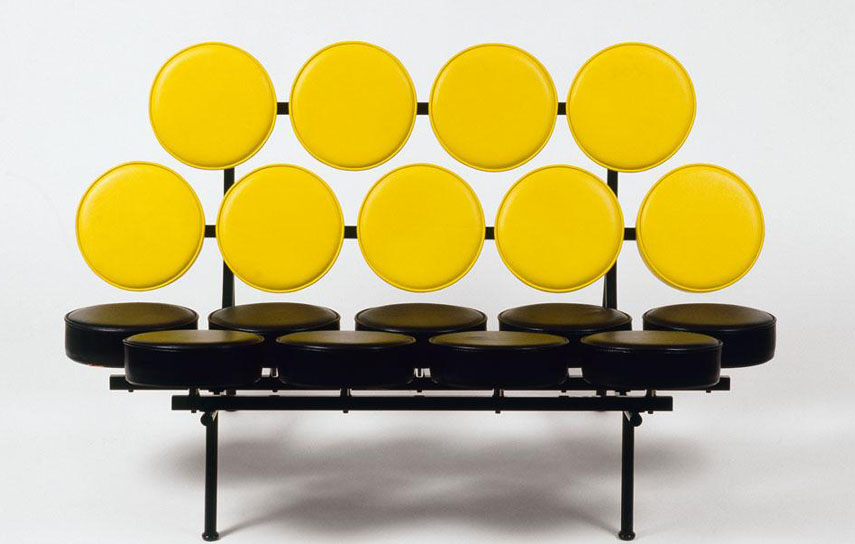
The Influence of Pop Art on Design
Pop art and design were intertwined from the beginning. Since the brightly colored visuals of pop fine art originated in commercial graphics, it was a matter of time until its aesthetics started to influence other blueprint areas. The pop artists often chose industrially produced appurtenances as the subjects of their work, at the aforementioned time influencing designers to create completely new objects. Popular art was treating art as a business – so both the artists and the designers influenced by them wanted to create something appealing and commercially successful. Pop art furniture, emerging in the sixties, relied on the same gear up of brilliant colors, unusual designs, sturdy geometrical shapes, and... plastic! Considering plastic screams consumerism, while at the aforementioned time being the material of the future. It doesn't get more than popular than that, does information technology? The fashion industry also didn't take long to merge with pop art. Today, we can find its traces in many different art forms: gimmicky production and package designs, decorative elements and fifty-fifty photography.
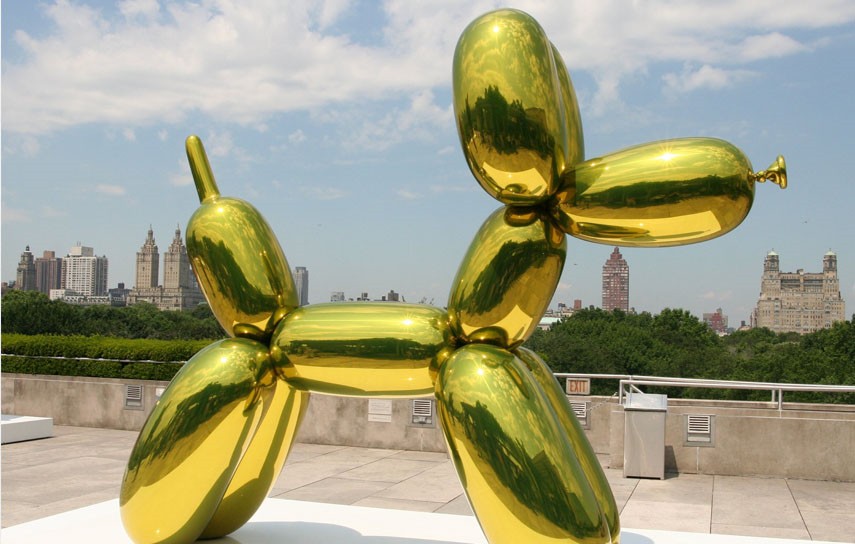
Neo-pop Fine art: Is it Just Popular?
The interest in popular fine art declined during the seventies just re-emerged in the 1980s. The revised pop art is often called the neo-pop art, although it'south probably best to recall of it equally a natural development of the genre. The motion never ceased to exist and its core ideas were never changed. At that time, a new generation of popular artists, born in the fifties, started creating art relying on the visual lawmaking and ideas of its predecessors. Jeff Koons' sculptures are perfect examples of pop art. Japanese artist Takashi Murakami blends anime and manga influences in brightly colored, commercially appealing, pieces of fine art.
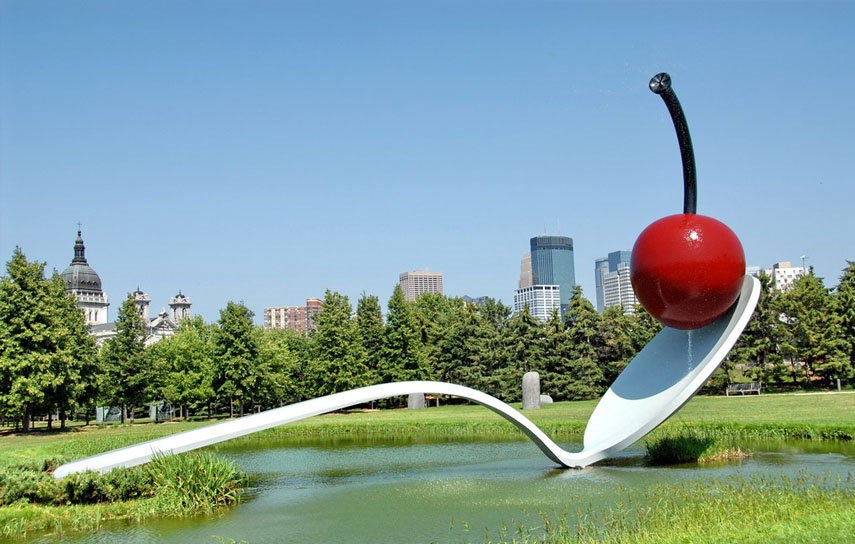
The Visual Codes of Pop Art and Pattern Today: a Never Ending Story
The visual code of popular art, although based upon commercial printing techniques in the fifties, still lives on. Its clear lines, sharp and clear representations of symbols and objects and potent colors tin can nowadays be constitute in many areas of industrial and graphic design. Is it merely nostalgia? Probably not. Everybody loves design that pops. The abundance social networks has redefined being famous. The visual culture of today cannot be imagined without thousands and thousands of photos not much different Warhol's Polaroids of the rich and famous that served as a base of operations for some of his works. We can never outgrow popular fine art because it will surely outlast united states.

Popular Fine art Furniture
Pop Art influenced well-nigh every form of art, then why should furniture be excluded? Interior design lovers tin agree that pop art furniture brings that special whiff of fresh air and energy into the room and spark a conversation or two. The basics of Pop Art are the use of "irrelevant" materials, a swell visual event, and the unconventional personality of the artworks created in this manner. As for the Pop Fine art furniture, the limits do not exist. Information technology is witty, geometric, brightly colored, and – made with cheap materials. The furniture made in pop art style is on its ain a piece of work of art, with the bright and clashing color scheme, the youthful and vibrant décor style, creating a unique dynamic in the room, calculation the perky energy and liveliness to the space it inhabits. The mental attitude that pop art furniture takes is threefold: firstly, it addresses the contemporary trends and issues, secondly it presents the strong, all the same unrestricted viewpoint when it comes to manner, and thirdly, it appears to exist short-lived in the terms of trendiness, only information technology nevertheless leaves a noteworthy impression on the earth of blueprint.
Ironic and humorous, the pop art furniture serves as sort of a transferable monument to the contemporary times. This means that, merely like Pop Art itself, information technology follows the trends and the ad materials of the fourth dimension it is created in. The skillful example of a piece of pop art furniture is the Bocca sofa, or Marilyn sofa, created by Studio 65 back in 1972. The oversize red lips that serve as a sofa accept become pop all over the globe, selling for over $8000 today. The materials used for the production of this piece were common cold-expanded polyurethane and elasticized cloth cover. What makes it so special and meaning is the fact that it looks unreal, near too cartoonish to be a piece of furniture, information technology is a piece that non only comforts your body but also tickles your mind as you slowly realize y'all are resting your back on the pair of bright ruby-red lips that could get-go talking any second. The fact that it is only produced in the signature red colour makes this piece even more than appealing.
Pop Fine art furniture merely "pops up" with its bold, strong, and vivid colors and minimalistic pattern. And let'southward not forget the functionality! Roberto Sebastian'due south Malitte lounge produced in 1965 is the perfect example of functionality and way blended together. The five pieces fabricated out of polyurethane foam and wool serve as lounge chairs, and leg rests coming together in a perfect cube when assembled. The blobby looking green furniture is juxtaposed with the vivid yellowish centerpiece, making this jigsaw puzzle middle-catching and making you want to redecorate your whole house to fit these pieces inside.
Finally, pop art furniture continually discovers new materials that furniture manufacturers would never even consider using. In the 1960s the artists rebelled by embracing plastic, metal fibers, and paper, resulting in i of the most popular (and nearly questionable) piece of furniture styles: the inflatables. Young people found it especially appealing, regardless of its low durability and low quality, considering they could finally move around, not worrying about hiring the moving companies or having to suffer in their sleeping bags while traveling. The blow-up furniture was a slap in the face of the high-terminate furniture designers, and a critique of the coin-oriented America in the mail-Globe State of war 2 times. The short lives of these pieces did non stop them from earning the condition of the works of fine art since they raised a question – does art have to be eternal to be considered art?

Editors' Tip: Tilman Osternwold
Andy Warhol one time said: "Everything is cute". He was talking about the glamor of modern life, of the consumer guild, and the earth of media and its superstars. This quote can be considered the maxim of pop art generation that included the big names we know today, Roy Lichtenstein, Jasper Johns, Claes Oldenburg, James Rosenquist, Robert Rauschenberg, Richard Hamilton, Tom Wesselmann, and Andy Warhol, amongst others. The world of Pop Fine art of the 1960s had a dandy result on the art history and the influence of this movement can exist seen even today. The writer of the book, Tilman Osterwold has explored the themes, styles, and sources of the Popular Art movement effectually the globe.
Featured epitome: Roy Lichtenstein – Woman in bath, 1963, particular. All images used for illustrative purposes just.
Source: https://www.widewalls.ch/magazine/pop-art-design